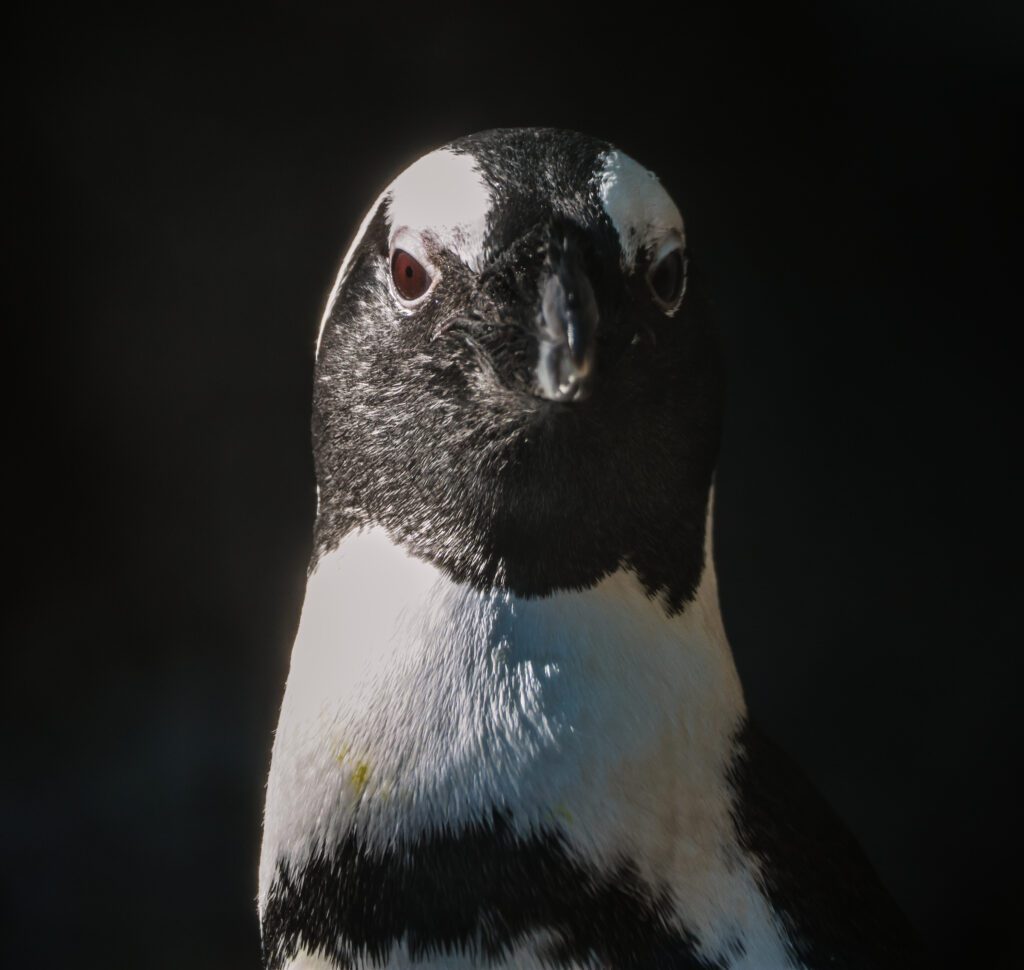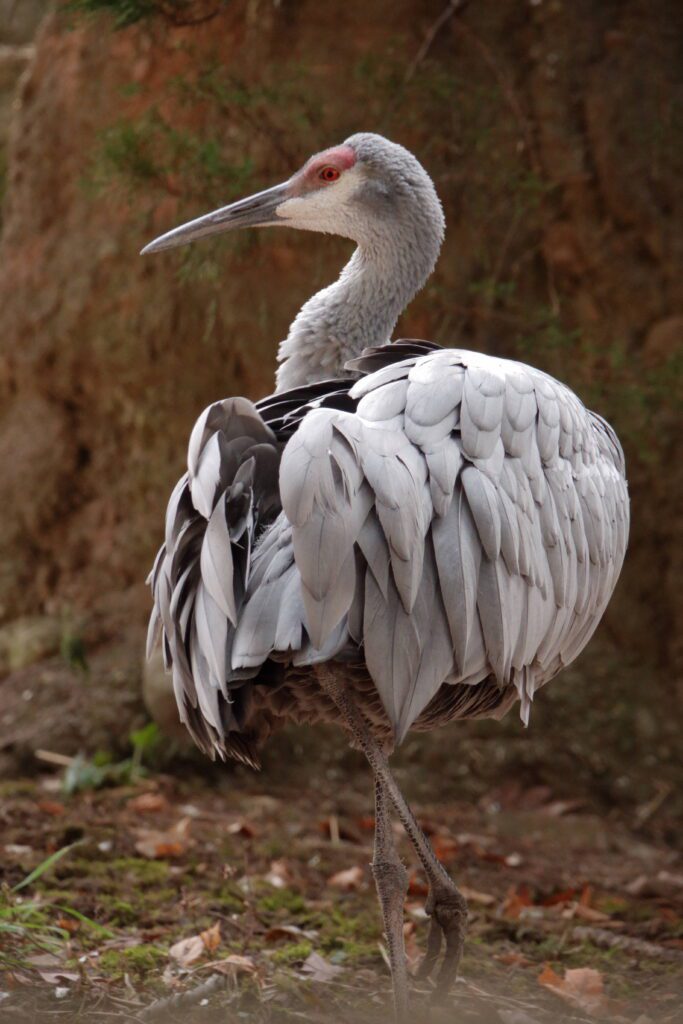Seneca Park Zoo is our region’s largest conservation organization, reaching more than 600,000 individuals each year through our conservation education and action programs. The Zoo is also involved heavily in species survival, raising critical funds and awareness for the many threatened species whose continued existence is relying on positive, collective human action.
African Penguin
Africa’s sole native penguin species has been officially classified as critically endangered in a recent assessment by the International Union for Conservation of Nature (IUCN). In the mid-1950s, an estimated 141,000 breeding pairs—or approximately 282,000 mature individuals—were primarily found on small islands off the coasts of Namibia and South Africa. By 2023, this number had plummeted by 93%, leaving only about 9,900 breeding pairs, or 19,800 individuals.
As of the IUCN’s latest assessment in July 2024, the population is estimated at just 1,200 breeding pairs in Namibia and 8,750 pairs in South Africa. The IUCN warns that this downward trend “shows no sign of reversing” and emphasizes the urgent need for immediate conservation efforts.

Many of the extreme events we’ve witnessed in recent years—such as droughts, wildfires, and extreme heat waves—are directly linked to climate change, with projections indicating they will only become more frequent and severe. These changes are reshaping ecosystems, including the marine environments of Africa.
The report spotlights African penguins as a stark example of a species deeply affected by climate change. These iconic birds face mounting challenges as their food sources dwindle due to reduced fish stocks, shifts in ocean temperatures and currents, and intense competition with fisheries. Rising sea levels and storm surges are threatening their breeding habitats, while extreme heat and powerful storms endanger their eggs and chicks.
African penguin populations have plummeted by 69% over the past two decades. Today, only an estimated 15,800 breeding pairs remain in the wild—10,000 of them in South Africa. In response, The Association of Zoos and Aquariums (AZA) rallies its member institutions to champion the fight for African penguin survival. These efforts include building artificial nests to boost penguin populations, developing disaster response plans for oil spills, and tackling critical threats like overfishing, habitat loss, and pollution.
In partnership with global allies, AZA institutions including Seneca Park Zoo are driving the mission to Save Animals from Extinction (SAFE) into action. At the heart of this mission is the SAFE African Penguin program—a comprehensive effort to halt the species’ decline. With much of the focus centered in South Africa, where access to penguin colonies is more feasible, the program is addressing the most pressing challenges to these incredible birds’ survival. From equipping first responders with essential tools to stabilizing and rehabilitating penguins, to setting up specialized disaster plans, support is sent right to the field.
Together, AZA and Seneca Park Zoo are rewriting the future for African penguins, blending science, passion, and global teamwork to ensure these charming seabirds thrive for generations to come. Seneca Park Zoo is working toward saving African penguins from extinction right here at the Zoo. The Zoo has been a prolific breeding facility, having bred 115 penguins since 1999.
You can support African penguins just by visiting the Zoo. Funds are raised at the gate and the Zoo Society donates to the orphan chick programs and other parts of the AZA SAFE program. Seneca Park Zoo also supports the Southern African Foundation for Conservation of Coastal Birds (SANCCOB). SANCCOB’s mission is to reverse the decline of seabird populations through rescue, rehabilitation, and release of ill, injured, abandoned, and oiled seabirds like the African penguin.
Sandhill Crane


At the Zoo, guests can view and learn about another avian species, sandhill cranes. Sandhill cranes are a migratory bird species that are facing increasing environmental pressures. They historically have spent spring breeding season and summer in the northern regions and fly south for the winter. During migration, cranes will assemble at established staging areas and stopover points, the largest location is the Platte River in the valleys of Nebraska, which hosts an estimated ¾ of the sandhill cranes that breed from Alaska and the Canadian planes. Research suggests that the roosting habitat of the Platte River valley is declining and the migration patterns of sandhill cranes have been adjusted as a response to climate change. We are even seeing this species in our region as they look for new roosting habitat. You can now see these gorgeous birds at Montezuma or even Rochester during migratory periods.
Sandhill cranes are vulnerable to changing precipitation patterns, rising sea levels, erratic weather, wetland drainage, food loss, as well as the conversion of wetland habitat into areas used by humans. Reports of sandhill cranes arriving at their spring migration sites have occurred progressively earlier in recent years. This change in pattern could lead to competition for resources with other migratory waterfowl species in habitats that are being diminished by the effects of climate change. The National Audubon Society projects that the wintering range of sandhill cranes will decline by 58% by 2080 due to climate change. Protecting and restoring wetlands is essential for both humans and wildlife. Wetlands improve water quality by naturally filtering pollutants, control floodwaters, protect from erosion, and store large amount of carbon dioxide from the atmosphere. Restoring these habitats will help the beloved sandhill crane but also the future of our planet.
Polar Bear


Climate change is also impacting the Arctic where polar bears at Churchill, Canada end their summer fast by venturing out on sea ice to hunt and eat seals. As of November 2024, no sea ice had formed in the Hudson Bay region, meaning the bears were still on the shore waiting to end their fast. Churchill’s mayor remarked that the bay had never iced over this late. In 2024, polar bears had been off sea ice for more than 100 days. The fasting season for polar bears, the time spent off the shore and away from seal prey, has lengthened substantially in the past decade. An important fasting threshold is around 180 days, the limit at which up to 21% of adult males and 63% of cubs could starve to death.
Seneca Park Zoo has donated more than $30,000 to Polar Bears International (PBI), a non-profit dedicated to help secure a future for polar bears across the Arctic, through our yearly Defend the Ice partnership with the Rochester Americans. Zoo naturalists and volunteers staff tables in Blue Cross Arena, educating fans on PBI, artic sea ice loss, and what they can do to help.







